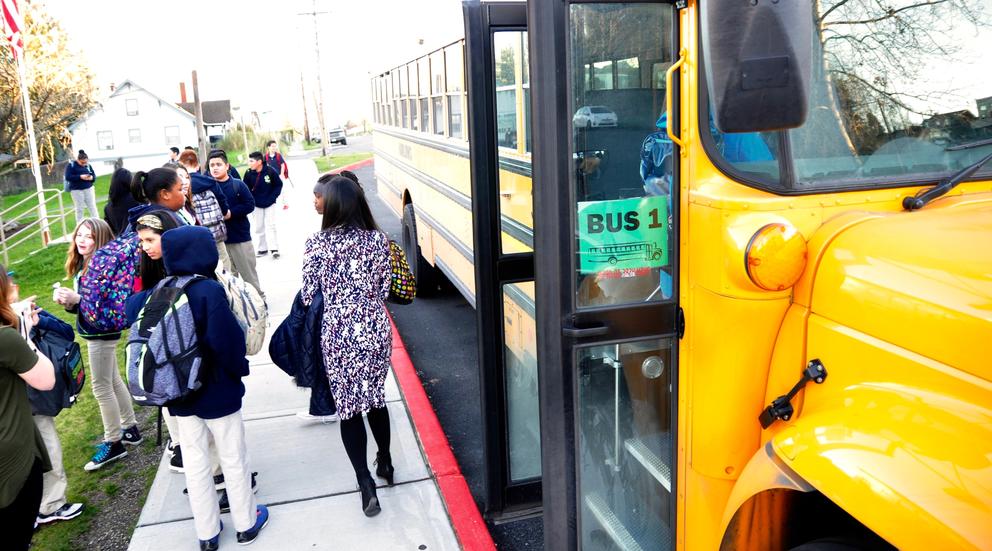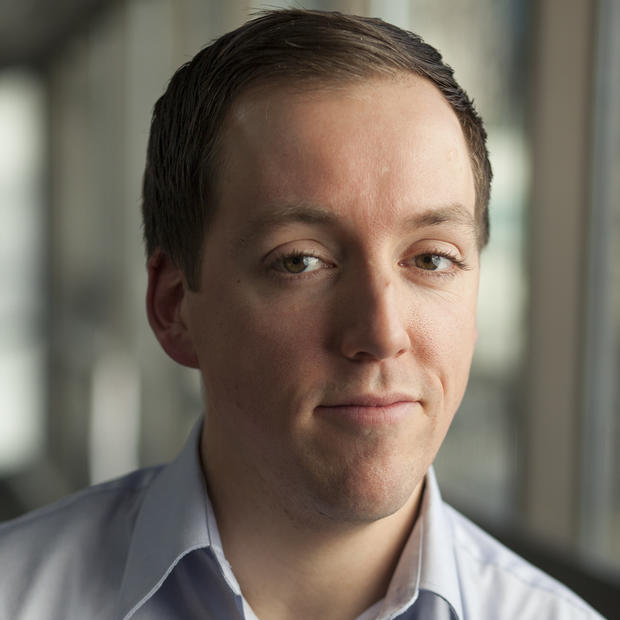“Now I’m going to pick a variable!”
Fredolyn Millendez is standing in front of her math class. The lights are dimmed, and a projector shines onto the wall at the front of the room. As enthusiastically as if she were leading a cheer at a hometown game, Millendez leads the class through the basics of pre-algebra.
The young teacher talks fast, calling out her sixth-grade students by name, and throwing a new challenge at each one. She changes the slide and a series of lines appear in the glow, each with dots and numbers.
“We’re going to write the inequality represented by each dot,” she tells them.
Raised in South Seattle and now in her fourth year of teaching, Millendez is a teacher at Destiny Charter Middle School in Tacoma. After teaching in public schools in Texas, Millendez said, she took a job at a charter school there because it had a reputation for pushing teachers, and she wanted the challenge.
Now Millendez is back in her home state, and her school is in the middle of a statewide controversy. After several failed attempts, an initiative authorizing charter schools passed in Washington in 2012, opening the way for schools like Destiny. But in late September of last year, the state Supreme Court struck down the initiative as unconstitutional.
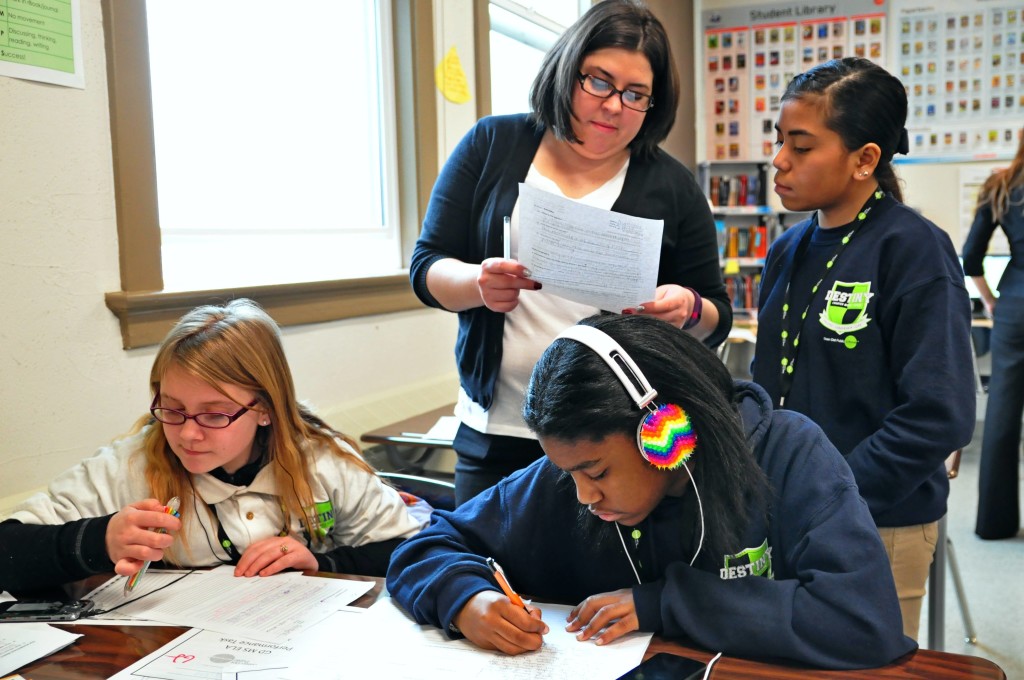
By the time the court delivered its ruling, however, Destiny and eight other new charter schools in the state were already opening their doors. Now, with the activities of the state board that was supposed to oversee them suspended and their official funding cut, Washington’s charter schools are in limbo, fighting in the state Legislature to stay open.
If they succeed, groups like Green Dot, the nonprofit that runs Destiny as well as a number of schools in California and Tennessee, would likely be allowed to open more charter schools around Washington, or at least continue running the eight that are currently open. If they fail, their doors likely would close at the end of this school year, and their students would have to go back to traditional public schools.
The one ray of hope for the schools is that the court didn’t rule against the existence of charter schools specifically. Instead, it found that the way the initiative set up oversight for the schools disqualified them from receiving state funds. Under the terms of the 2012 initiative, every charter school is governed by a committee or board appointed by the group that establishes the school. But according to the state constitution, only “common schools” can receive money set aside for schools — and common schools must be run by an elected board, not an appointed one.
The 2012 initiative tried to get around the question by defining charter schools as “common schools.” But the court pointed to a 1909 ruling, which said schools had to meet three criteria to qualify as common schools: They had to be free, available to all children, and under the control of the voters of their local school district. Charter schools met the first two criteria, the court said, but lacked control by voters, disqualifying them from receiving public money set aside for schools. And the court ruled that the funding mechanism couldn’t be separated from the rest of the law, making the whole measure unconstitutional.
Three months after the court’s ruling, the state commission established to oversee all Washington charters began the process of closing down. The Office of the Superintendent of Public Instruction bent the rules to allow Destiny and the eight other charter schools then open (one has since closed) to function under the same umbrella as online learning programs, but only temporarily.
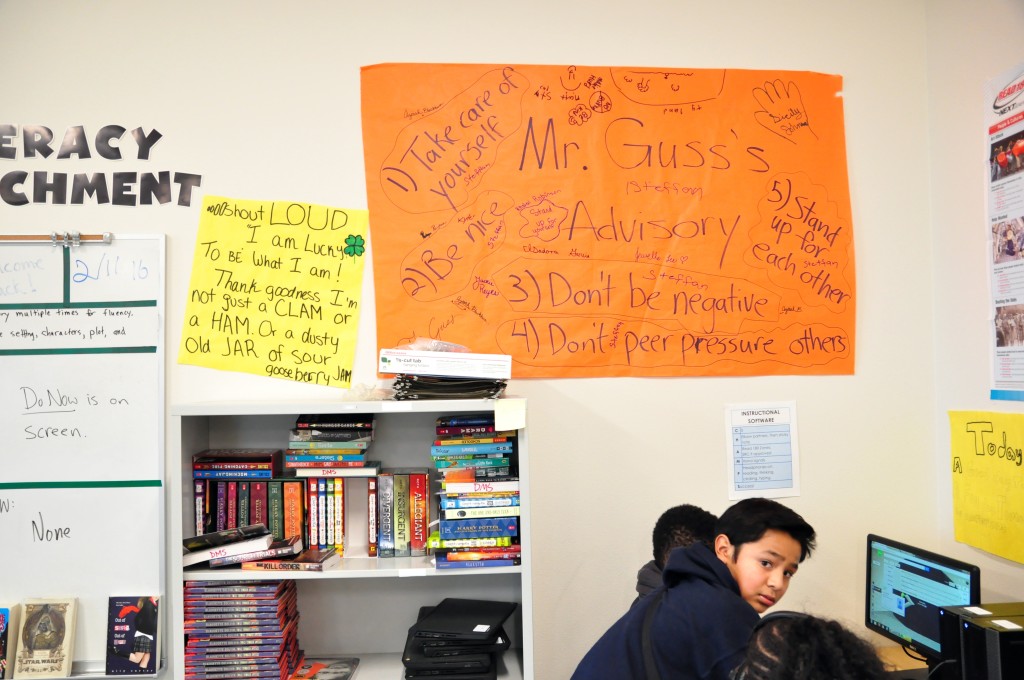
One measure making its way through the Legislature is seeking a permanent status for charter schools by proposing a swap: Instead of changing the rules about what is a common school, the bill proposes changing charters’ designation, and changing the way they are funded. And instead of receiving a cut of the money set aside by the Legislature for public schools each year, the bill would take $18 million out of the state’s lottery proceeds, which are earmarked for other education programs like scholarships and limited-entrance schools for tribal members and juvenile inmates.
That bill, sponsored by Steve Litzow, R-Mercer Island, still needs support from the House Education Committee, but even if it makes it through the Legislature and receives Gov. Jay Inslee's signature, the funding challenge for charter schools won’t be over. That’s because under the 2012 initiative, charter schools were allocated the same funds as regular public schools — about $11,000 per student, according to Destiny's Executive Director Bree Dusseault — but only about $8,500 of that would likely be replaced under the new proposal. The rest, about $2,500, came from property tax levies — and since levy money is specifically raised for public schools, the charter schools likely couldn’t receive any of it.
The charter fix bill also depends on a funding swap that could be viewed unfavorably by the Supreme Court. In short, the bill proposes funding charter schools through a separate account — the Washington Opportunity Pathways Account — and replacing that money from the general fund.
But in its ruling on the 2012 initiative, the court said specifically that they would be skeptical of giving charters money from the state’s general fund, because that’s the same place public school funds are kept. If the court took the view that the bill was just a way to swap money out of the general fund to pay for charters, it might put the proposal in legal jeopardy.
At Destiny, Millendez calls on students as they raise their hands. Then she calls on one who doesn’t have his hand up, and asks him to explain a concept on the board, patiently coaxing it out of him. The surprise call isn’t a huge event — none of the students turn their heads to stare at the student singled out, and after he gives his answer, the class moves on without a hitch. Outside the classroom, Dusseault explains that the tactic is one way teachers are taught to get classes to engage by gently challenging students who seem to be hanging back.
At the public school where she started her career, Millendez says, the principal would observe her class twice a year and give her feedback. In the first charter school the University of Washington graduate worked at, and now at Destiny, mentors observe her classes and meet with her multiple times each month. They go over everything from weak spots that show up on test scores to techniques for coaxing reticent teens to engage during class discussions.
Later, the bell rings. Classroom doors swing open and excited faces flood the hallway. Or, they flood some of the hallways. Spread out over three floors, the students fill perhaps a third of the school. A three-year plan to reach full enrollment stopped when the law was overturned.
At one end of the hallway, teacher Mishaal Mahmoud handles a minor dispute between students, while in the doorway to a classroom Rosebell Komugisha hands a paper back to a student. Other kids clown around, making faces and shouting rap lyrics. Then the bell rings a second time, marking the start of the next period. As quickly as they filled, the hallways empty again, leaving behind walls dotted with college pennants and hand-lettered signs advertising a school dance.
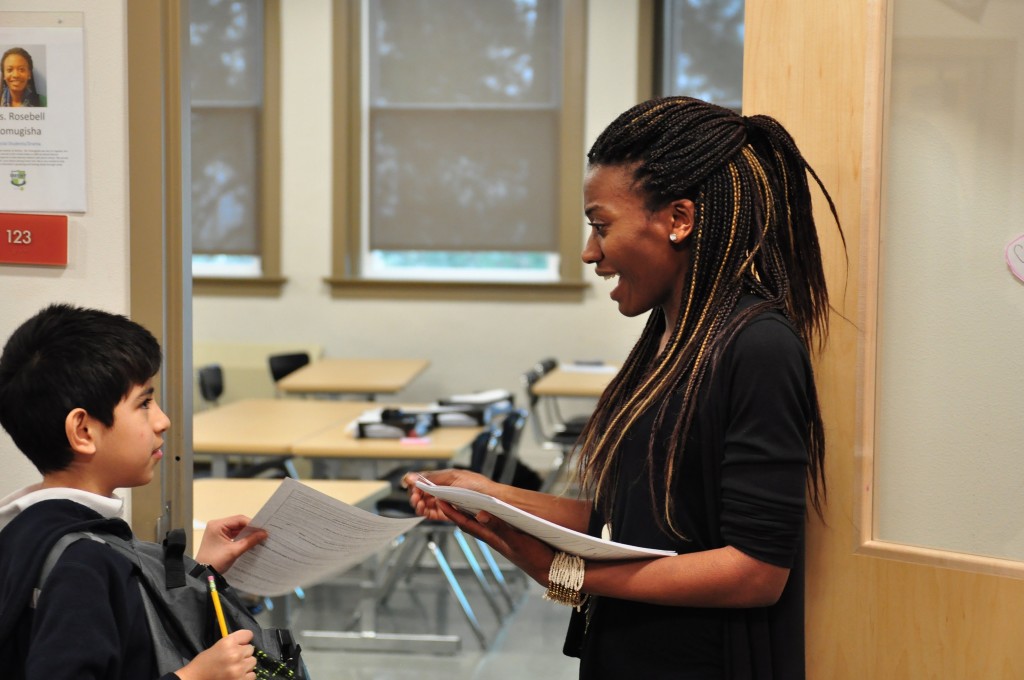
In the face of the controversy, Dusseault remains optimistic. In passionate terms, she makes the case for charter schools, and especially for hers. Teaching staff at the school is five times more diverse than the Washington average, she says. The students are two-thirds less white and a third more likely to be either low income or in need of special education courses than students in Tacoma in general.
“That’s a profile of students who fall through the cracks,” Dusseault says.
In what might be described as rapid-fire academic patois, Dusseault describes what sounds like an environment designed to catch them. Teachers at the school are coached to be “warm demanders,” she says — adult figures who don’t trade away warmth and closeness for accountability. That’s part of a drive to create a “high love” environment, one that helps kids succeed and grow both academically and “socioemotionaly." This includes a class period the kids spend with an instructor who will be with them from the day they enter the middle school until the day they graduate, covering everything from college essays to talks about bullying.
In one classroom, Chay Dixon is teaching an English class. While she stands at the front of the room explaining about how to recognize and write a body paragraph, a teaching assistant orbits the room answering questions and checking students’ work. The assistant, Dusseault explains, will likely break off a small group of students who need extra help after the lecture, to work at the back of the class.
This year, Dusseault adds, 80 percent of Destiny’s students started out in remedial math classes — and within three months, a third of them had caught up.
Even some vocal critics admit that they can’t say charter schools are failing. Part of that has to do with the timing of data-gathering: the yearly tests that students in charters are supposed to take that would allow comparison of charter performance with public schools aren’t until the end of the year. With the school year only about half over and those tests not yet administered, data that would objectively show how the schools are doing is scarce.
Along with a lack of data showing problems, however, education activists like Seattle blogger Melissa Westbrook, who led a campaign against the charter school initiative in 2012, say there’s little data support charters’ claims of success in the state, either. Nationally, according to numerous studies and reports, outcomes in charter schools vary widely at best, with nonprofit urban schools credited with some robust successes, but others, especially rural or suburban schools, actually performing worse than regular schools. So far, Westbrook said, charters seem to be picking and choosing the data they’ll release.
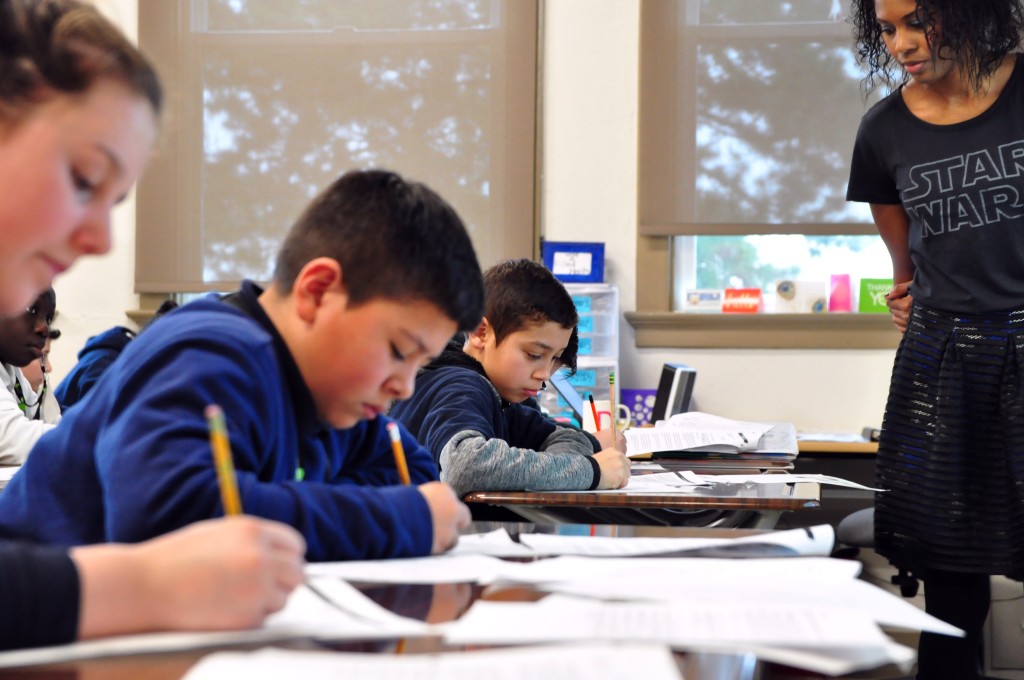
For charters' critics, the schools represent an abandonment of the effort to close the cracks in the public education system, and get to work building a net to catch the kids slipping through. According to champions of the charter system, however, that’s upside down: instead, they say, charters can compensate for weaknesses inevitable in the public system.
If anything, the mix of outcomes around the country points to the possibility that both sides might be right, to a degree. Public school advocates point to hard fact in saying that charter schools do little to improve education under the McCleary ruling, the state Supreme Court's ruling that the state is doing too little for public schools. At the same time, many charter schools, according to what little data is available, do appear to be providing at least the start of a good job with the kids who join them. And the stories of success with charter schools around the country, in the places where they have succeeded, are sometimes remarkable.
But the idea of a middle ground gives rise to perhaps the largest question of all — and one the state Supreme Court did not address: that of uniformity.
In a footnote to their ruling on the 2012 initiative, the court explained that they had examined the way charter schools were governed first. Because what they found disqualified the schools, they stopped there, without going any further. But the same footnote carefully pointed out the state constitution requires that schools “must be uniform in that every child shall have the same advantages and be subject to the same discipline as every other child.”
Questions about whether a charter school system could offer the same opportunities to every child in the state, the majority justices wrote, would be left for another time.
The thing is, what many charter supporters want is exactly the ability to stray from the statewide norm — to empower teachers and administrators and create a culture of local innovation.
One of those supporters is Dan Calzaretta, a Walla-Walla teacher who after working at a public school established a charter there — and found support from the superintendent of the local school district. The core of the plan, Calzaretta said, was creating an alternative for students who didn’t do well in ordinary schools.
“It was to meet a special need,” Calzaretta said. “There’s not one system that works for every kid.”
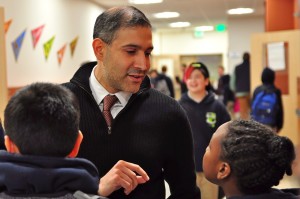
That appeals to people across the state, said Robin Lake. Lake heads the Center on Reinventing Public Education, a research center at the University of Washington that has conducted numerous studies of charter schools nationwide.
“There’s a certain segment of folks who really want their own space,” Lake said. “Who really want to teach in their own way, and do it in a way that’s free of bureaucracy.”
“Kids are not all the same,” Lake added. “They need different types of schools.”
Even if Washington's charter schools manage to keep their doors open for now, the next big question could be whether the state constitution is fundamentally opposed to that exact idea.

